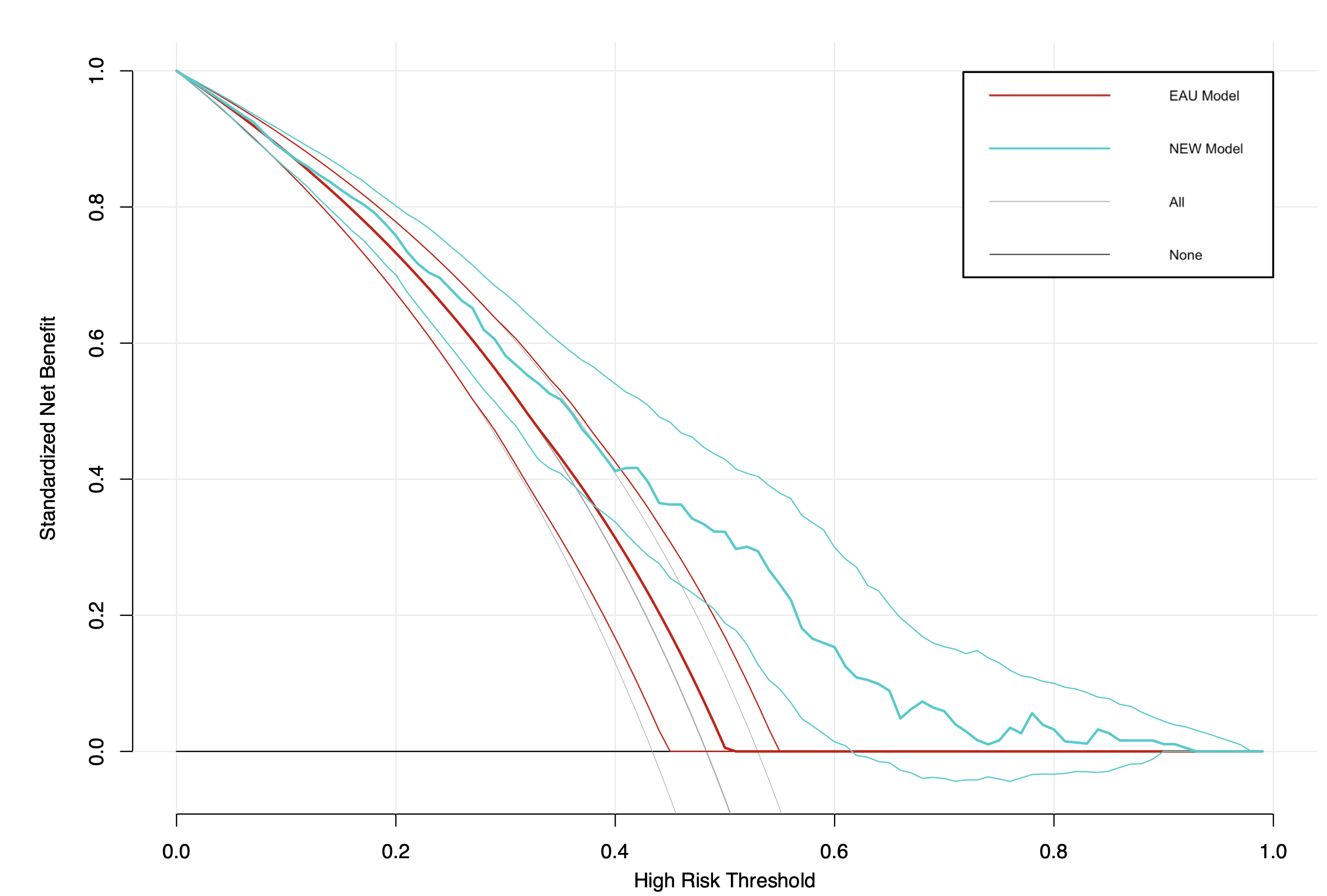Back
Poster, Podium & Video Sessions
Podium
PD20: Infertility: Epidemiology & Evaluation II
PD20-06: Challenging the EAU guidelines on sperm DNA fragmentation testing in primary infertile men
Saturday, May 14, 2022
7:50 AM – 8:00 AM
Location: Room 244
Edoardo Pozzi*, Giuseppe Fallara, Federico Belladelli, Christian Corsini, Massimiliano Raffo, Luigi Candela, Antonio Costa, Daniele Cignoli, Nicolò Schifano, Alessia d'Arma, Milan, Italy, Paolo Capogrosso, Varese, Italy, Luca Boeri, Luca Pagliardini, Eugenio Ventimiglia, Rayan Matloob, Francesco Montorsi, Andrea Salonia, Milan, Italy
- EP
Podium Presenter(s)
Introduction: The EAU guidelines suggest testing sperm DNA fragmentation (SDF) among couples with recurrent pregnancy loss or in men with unexplained infertility. We aimed to validate latest EAU guidelines and to identify a novel and better performing model to identify primary infertile men with altered SDF at baseline.
Methods: Data from 516 primary infertile men with either normal or altered SDF were analysed. Infertility was defined according to the WHO criteria. Semen analysis, SDF (according to SCSA) and serum hormones were measured in every patient. Altered SDF was considered with a threshold of > 30%. Descriptive statistics compared the overall characteristics of patients with either normal or altered SDF. The new predicting model was identified through logistic regression analysis exploring potential predictors of altered SDF at baseline. Diagnostic accuracy between the two predictive models (EAU Vs. New) was assessed and decision curve analyses (DCA) tested their clinical benefit.
Results: Of 516 patients, 268 (51.9%) had altered SDF at semen analysis. Median (IQR) age was 38 (34-42) years. Patients with altered SDF were older (39 vs. 37 years), had lower mean testicular volume (Prader 15 vs. 17.5) and lower total motile sperm count (TMSC) (1.80 vs. 11.82 x 106) (all p<0.0001). No differences in terms of smoking, baseline serum hormones, BMI and comorbidities were found. The two groups showed similar rates of unexplained infertility and history of miscarriages. At multivariable logistic regression analysis, age (OR: 1.09; 95%CI: 1.05, 1.13) and baseline TMSC (OR: 1.51; 95%CI: 0.62, 3.63) were identified as strong predictors of altered SDF, after adjusting for testicular volume, history of miscarriages, unexplained infertility and BMI (all p<0.0001). The newly identified modelshowed higher accuracy compared to EAU guidelines (AUC: 0.73 vs. AUC: 0.52). Figure 1 displays the superior net benefit of using the new model to identify primary infertile men with pathological SDF compared to EAU guidelines.
Conclusions: The application of the EAU guidelines does not ensure proper identification of primary infertile men with pathological SDF. We propose a novel and better performing predictive model to identify those infertile men with altered SDF at first clinical assessment.
Source of Funding: N/A

Methods: Data from 516 primary infertile men with either normal or altered SDF were analysed. Infertility was defined according to the WHO criteria. Semen analysis, SDF (according to SCSA) and serum hormones were measured in every patient. Altered SDF was considered with a threshold of > 30%. Descriptive statistics compared the overall characteristics of patients with either normal or altered SDF. The new predicting model was identified through logistic regression analysis exploring potential predictors of altered SDF at baseline. Diagnostic accuracy between the two predictive models (EAU Vs. New) was assessed and decision curve analyses (DCA) tested their clinical benefit.
Results: Of 516 patients, 268 (51.9%) had altered SDF at semen analysis. Median (IQR) age was 38 (34-42) years. Patients with altered SDF were older (39 vs. 37 years), had lower mean testicular volume (Prader 15 vs. 17.5) and lower total motile sperm count (TMSC) (1.80 vs. 11.82 x 106) (all p<0.0001). No differences in terms of smoking, baseline serum hormones, BMI and comorbidities were found. The two groups showed similar rates of unexplained infertility and history of miscarriages. At multivariable logistic regression analysis, age (OR: 1.09; 95%CI: 1.05, 1.13) and baseline TMSC (OR: 1.51; 95%CI: 0.62, 3.63) were identified as strong predictors of altered SDF, after adjusting for testicular volume, history of miscarriages, unexplained infertility and BMI (all p<0.0001). The newly identified modelshowed higher accuracy compared to EAU guidelines (AUC: 0.73 vs. AUC: 0.52). Figure 1 displays the superior net benefit of using the new model to identify primary infertile men with pathological SDF compared to EAU guidelines.
Conclusions: The application of the EAU guidelines does not ensure proper identification of primary infertile men with pathological SDF. We propose a novel and better performing predictive model to identify those infertile men with altered SDF at first clinical assessment.
Source of Funding: N/A


.jpg)
.jpg)